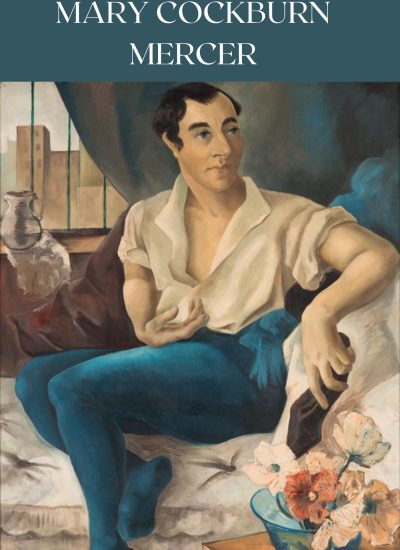Mary Cockburn Mercer
Research toward catalogue raisonne – FREE download below

Mary Stuart Cockburn Mercer (1882—1963) is considered to be among the Australian women artists who left our shores to study and develop their craft in Europe at the beginning of the 20th century, though this is not the case. She was born in Scotland, educated in England and lived much of her adult life in Italy and France, only sheltering in Australia through the Second World War. Australia does feature prominently in the family history howev-er, with her father being one of the largest landholders in the Western District of Victoria. At the time of his death, he had accumulated more than 36,500 acres of farm land at Springwood near Hamilton.
Before Mercer’s birth, the family were very much invested in colonial life. Her father, William Cockburn Messer (1828- 1889), arrived in Australia aboard the Ayrshire in 1852 at the age of 23 years. He married the American born Scot, Mary Stuart Anderson (1846-1912), in Jedburgh, Roxburgh in Scotland on the 21st August 1867, and the newlyweds returned to Australia together. The couple bore four children in Melbourne; Elizabeth Grace in 1869, Adeline Jane in 1871, Alexander Anderson in 1872, and William Frank in 1873. The year 1873 also marked a time of great tragedy for the family, with the death of their eldest child and sister, Elizabeth, at the age of 3 years. Understandably, the tragedy appears to have had a terrible impact on the family who, from that time onward, spent more and more time away from the colony. It would be almost ten years before more children would be born to the couple, the first of whom was Mary Stuart in 1882, followed by Marguerite Deloraine in 1884 and lastly, Thomas Hamilton in 1885. All of whom were born in Scotland.
For reasons unknown, Mercer’s Great Grandfather, Robert Mercer, reportedly changed his surname to Messer, and Mary and all her siblings were born under this name. It wasn’t until 1891 that her mother legally changed the family name back to Mercer, shortly after her husband’s death.
William Cockburn Messer died from an aneurism of the heart in Scotland in 1889. He provided well for the future of all his family, including his daughters, whom he bequeathed an annual income of £150, attainable from the age of 21 years. This was considerably more than the average income of the day and provided Mary with the financial security to follow her dreams.
Following the death of their patriarch, the family were often apart. Whilst Mercer’s older brothers were educated at the prestigious Loretto School in Scotland, like many daughters of wealthy families, Mary and her sisters probably received their early education from a governess. Certainly the family did employ one: a Miss Mitchell, who would later serve as ladies companion to Mary’s mother.
In 1981, Mary (snr) and her three youngest children return once more to Australia, probably to settle her husband’s affairs. They remained for a year and a half before returning to the UK in 1893. Records do not show the family again until 1901, when the census reveals their whereabouts once again in the UK. Mary (aged 18) and her younger sister Marguerite (17) are students of the Notre Dame Convent School in Clapham, England. Mary was enrolled under the name Marie, a name she appears to often go by, perhaps as a means of avoiding confusion with her mother. Mary senior, along with her eldest daughter, Adeline, and youngest son, Thomas, are living in Jersey in the Channel Islands with a cook and a ladies companion (the loyal Miss Mitchell). Mary (Snr) later bought the historic homestead of d’Hautre, which she knocked down and replaced with a stately home that is today, part of the d’Hautre School. Marguerite and Thomas both later married and settled in Jersey, whilst Adeline married an American and after spending some time in the U.S, migrated to Sydney, Australia in 1937 where they remained…. Download the catalogue below for the full history.
